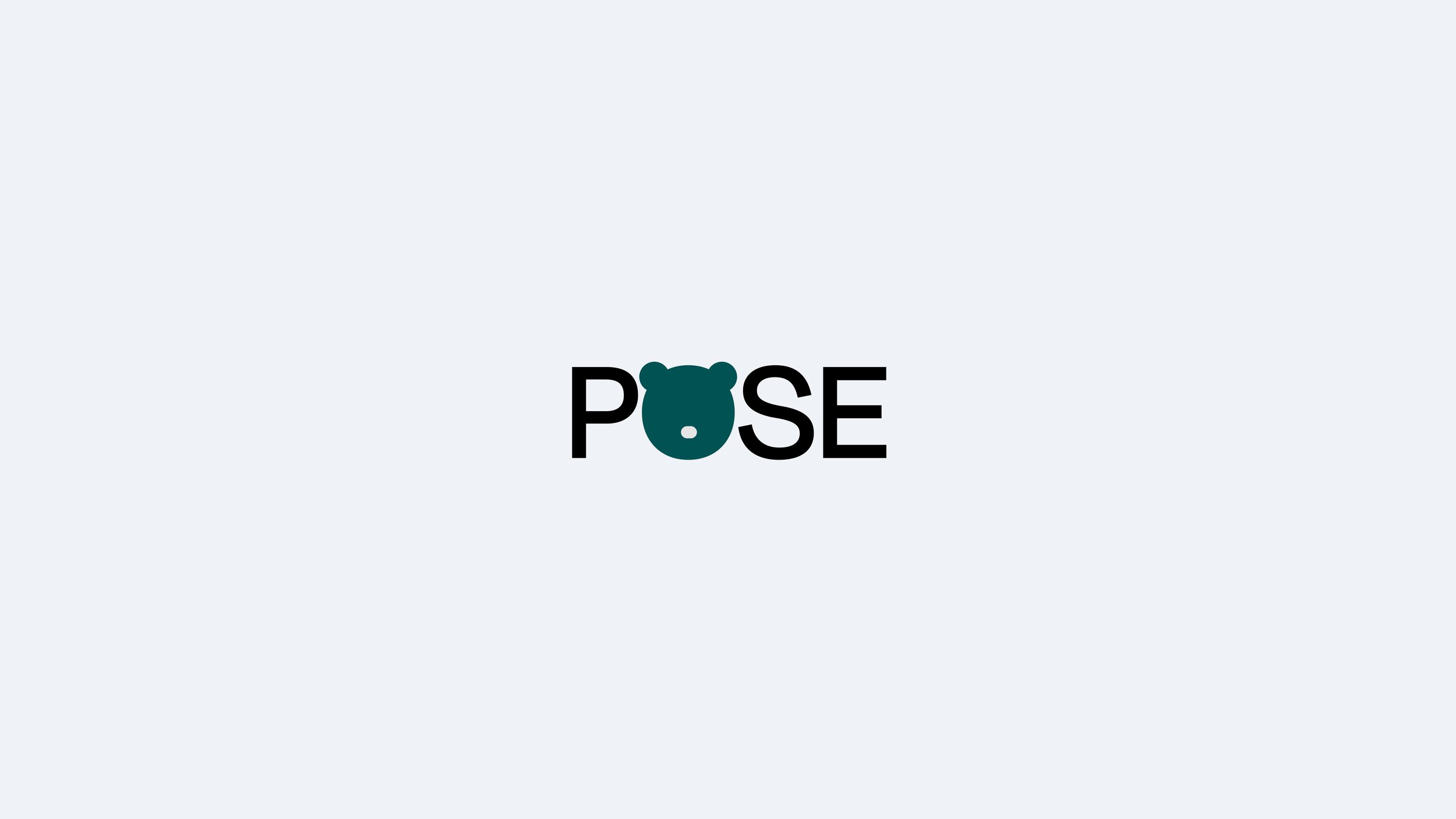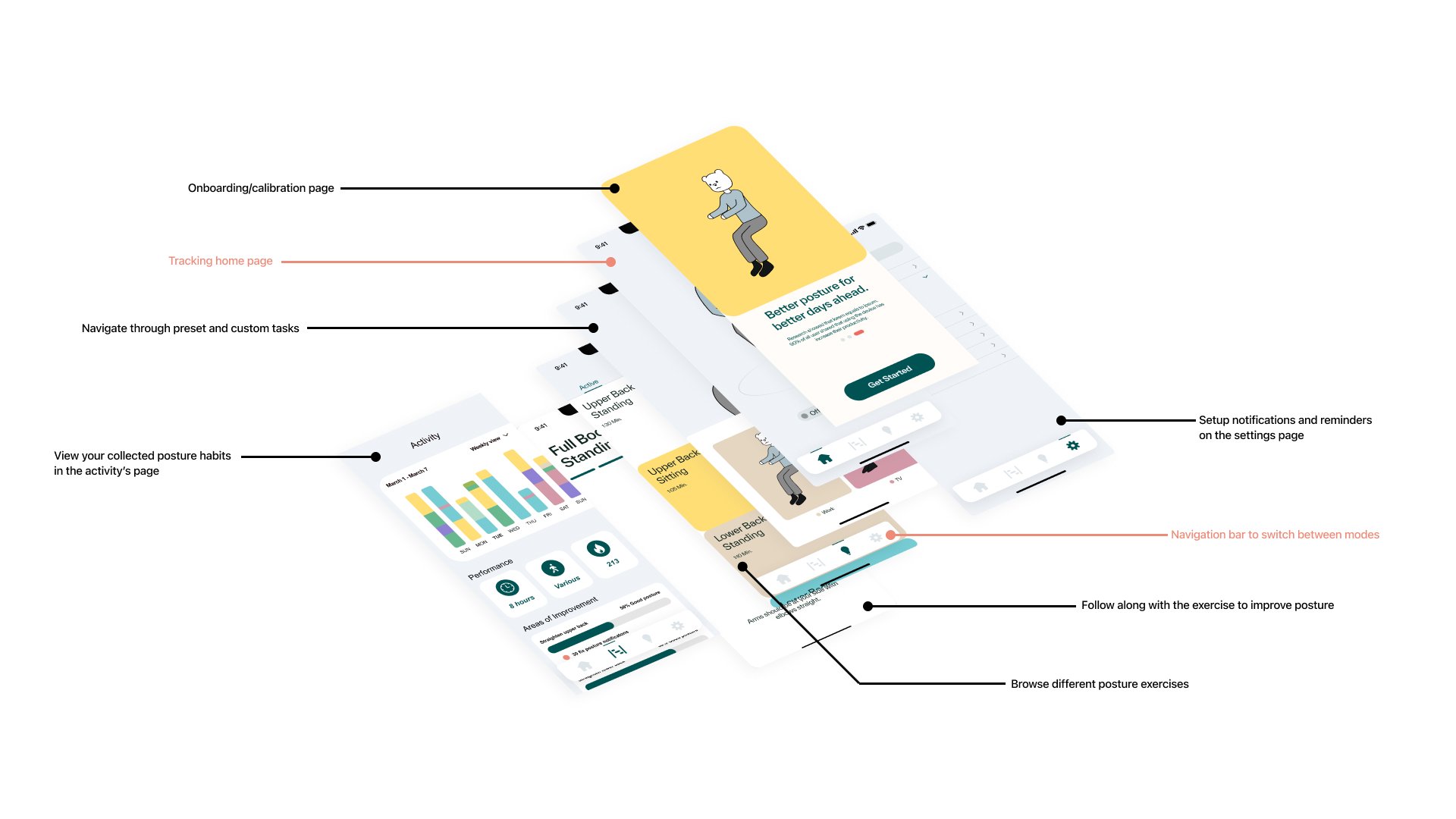POSE helps users to casually correct their posture long term by providing varied modes, actionable lessons, and detailed summaries for their whole body.

Duration: 6 Weeks
Project: Posture App
Team: Nolan K, Sai K, Ben W, Vivian T
Current posture sensing apps are invasive, ambiguous, and uninviting. Focusing only on the upper back, users are left with incomplete posture advice that often isn’t relevant to their specific needs.
Users want a more casual solution that isn’t disruptive to daily routines, while also providing holistic advice to promote long term improvements.
Using targeted advice, external reminders, and personalized tasks, POSE aims to be actionable, persistent, unobtrusive, and adaptive.
Problems + Opportunity
DESIGN LANGUAGE + INSPIRATION
Like all processes, our application started out with ideation and studying the current market for posture applications. Our team began with finding existing posture apps and finding what worked well, and what could be improved upon through competitive analysis. After our initial ideation, we began to conceptualize our product.
Our initial direction began with three separate modes of use, Education, Reminder, and Tracking. We wanted to focus on each mode individually in order to see the benefits and disadvantages each would bring. Between a few rounds of prototyping and adjusting our interface, we went though basic user testing to gain more feedback on our flow and concept. After receiving feedback from both our interviews and user testing, we were able to finalize our concept by combining our three modes into one cohesive app.
My focus throughout the project was user feedback, and prototyping micro interactions throughout the learn pages. Here I worked on sliding animations, buttons, bookmarks, and video play through to fix posture. Through user testing, I learned the benefits of combining our different modes into one application so users can have full control over fixing their posture.
Process
INSIGHTS + INTERVIEWS


Process Flow













